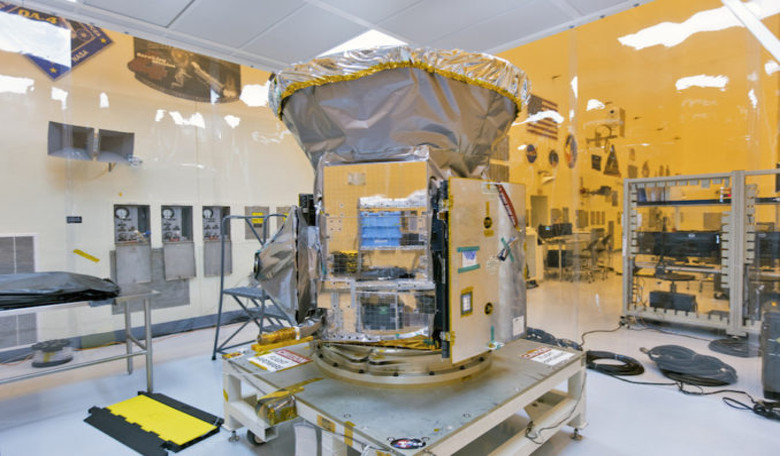NASA’s next planet-hunting mission, the Transiting Exoplanet Survey Satellite (TESS), has arrived in Florida to begin preparations for its launch in April.
TESS is set to become the first NASA science mission to launch on a SpaceX Falcon 9 rocket from Florida and although the launch was originally scheduled for March, it has been delayed for a month to allow SpaceX additional time to prepare the rocket for the mission.
Yesterday, following its 17 hour ride from Orbital ATK in Dulles, Virginia, where it has spent the last year being assembled and tested, the shipping container containing TESS was carefully opened and moved from the truck into the clean-room environment.
TESS was “bagged” in the container to help protect it from particles or moisture that could collect on its four wide field-of-view CCD cameras, thus impacting the quality of images the TESS team hope to collect. The telescope is set to monitor more than 200,000 stars for temporary drops in brightness caused by planetary transits, as it undertakes a two-year photometric survey of the solar neighbourhood.
Over the next month, the spacecraft will be prepped for launch at Kennedy’s Payload Hazardous Servicing Facility (PHSF), the same clean room used by NASA’s Cassini, New Horizons, Mars rovers and OSIRIS-REx missions, to name but a few, before their launches.
Once deployed from the Falcon 9, TESS will swing by the moon using the lunar gravity to slingshot it towards the mission’s operating orbit. “The Falcon 9 does a lot of the lifting for us, and then the moon does most of the rest of it,” said Robert Lockwood, TESS program director at Orbital ATK.
It will take around two months for TESS to settle into an egg-shaped orbit, where it will then follow a path with distances that range between 108,000 kilometres (67,000 miles) and 376,000 kilometres (233,000 miles) from Earth.
This unique High Earth Orbit (HEO) will allow for an unobstructed view of continuous light curves – the dip in brightness from the star being observed – from the thousands of stars TESS will study.
TESS is on the look-out for Earth and Super-Earth size planets and the size of a planet is proportional to the amount of light it blocks from its host star as it makes a transit. The amount of time between two successive transits is the "orbital period" of the planet, which is the length of that planet's year.
Usually, at least three transits are needed to confirm that a planet exists. TESS will therefore identify prime targets for follow-up observations with large ground telescopes, the Hubble Space telescope and the James Webb Space Telescope, which is set for launch next year.











